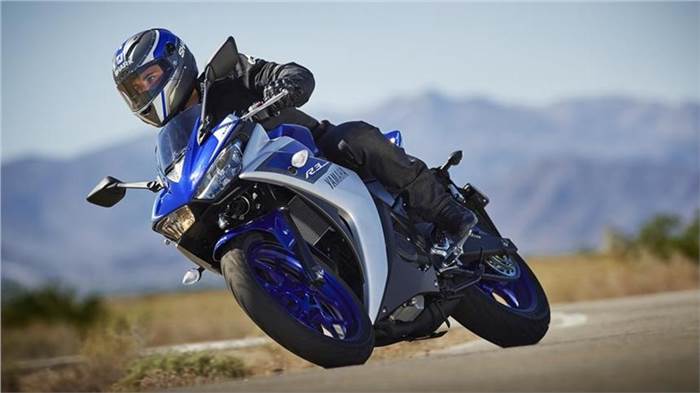Yamaha Motor Co’s new Medium Term Management Plan (MTP 2016-2018) was recently revealed as part of the company’s 2015 annual report, and president and CEO Hiroyuki Yanagi has accorded high importance to operations in the India market. The Japanese major is sharpening its focus on the ASEAN, India, Brazil/China, and developed markets, which account for the majority of its sales, as key growth regions. Of these markets, India is seen as one of the most promising. Commenting on Yamaha’s motorcycle business strategies in these key regions, Yanagi says, “We will develop highly efficient strategies for the motorcycle business that are optimal for each key market. We will look closely at market trends to determine the markets in which we will pursue sales volume and those in which we will give priority to stable earnings, to deliver distinctive new products.”
Gunning for volumes in India
For the Indian market, the growth game-plan is to increase volume scale to achieve stable profit. “We are targeting high growth in the Indian market, and aim to increase volume scale by expanding the product line-up focusing on the mass-market segment. Specifically, we will launch strategic models for emerging markets, and work to strengthen our contact points with customers by building up our sales network both quantitatively and qualitatively, focusing on rural regions.”
Clearly, the launch of the 110cc Saluto RX commuter motorcycle on April 14, is in line with this strategy. In an interview with our sister publication Autocar Professional, Masaki Asano, MD, India Yamaha Motor Sales, said: “We are now ready to go to the rural pockets as well with this new model. The Saluto RX will not just cater to the population of rural India but also the young riders from big and small cities. We did not have any connect in the commuter segment because we did not have any model for it other than the Crux earlier. The commuter motorcycle segment accounts for close to 60 percent of the overall two-wheeler market in India. This is a huge volume where we are now present.” For the ASEAN market, the aim is to capture market share and high profitability. According to Yanagi, “We will step up the introduction of platform models in the three ASEAN countries in which we operate. In particular, under the new MTP, we expect to recover market share and improve earnings in the Indonesian market, and we will roll out highly detailed area marketing to increase sales volume.” For Brazil and China, where demand is declining, Yamaha aims to achieve stable profit using a break-even point business model. And in developed markets, the growth mantra will be to stabilise profit using brand power through launching distinctive new products that convey Yamaha’s strong brand power.
Increasing management efficiency
Commenting on the strategy for the motorcycle business under the new MTP, Yanagi said, “We will shift to highly efficient business management that emphasises profitability.”
The motorcycle business will pursue highly efficient business management to achieve its final year, 2018 target of net sales of ¥1,300.0 billion (Rs 67,600 crore) with operating income of ¥74.0 billion (Rs 3,848 crore). This will involve highly efficient product development and cost reductions with an emphasis on high management efficiency and product competitiveness. Under the new MTP, Yamaha aims to make maximum use of platform models to consolidate the number of engines and bodies while expanding the model line-up to meet diversifying customer needs with new products. By pursuing cost reductions in procurement, manufacturing, and logistics, the company aims to reduce costs by a total of ¥60.0 billion (Rs 3,120 crore), equivalent to 5 percent of material purchase costs. Logistics costs are also to be reduced by applying the concept of Yamaha’s unique theoretical-value-based production to logistics.
In the growth lane
During MTP 2013–2015, Yamaha had set itself targets of ¥1,600.0 billion (Rs 83,200 crore) in net sales with operating income of ¥80.0 billion (Rs 4,160) for an operating income ratio of 5 percent. This was to be achieved through strengthening product competitiveness, changes to its Monozukuri (an approach to engineering, manufacturing and marketing products that emphasises craftsmanship and excellence), structural reforms and implementing growth strategies to reinforce our profit structure and achieved cost reductions.
The results for the fiscal year ended December 31, 2015, and Yamaha succeeded with net sales of ¥1,615.4 billion (Rs 84,000 crore) with operating income of ¥120.4 billion (Rs 6,260 crore), marking the third consecutive year of revenue and profit growth. The company admits that while production volume for key products declined by roughly 600,000 units over the three-year period, sales rose in developed markets and the introduction of higher-priced models in emerging markets. In addition, the market share grew for its motorcycle business in all markets except the (ASEAN) region. For the new MTP (2016-2018), Yamaha is targeting net sales of ¥2 trillion (Rs 104,000 crore) and ¥180.0 billion (Rs 9,360 crore) in operating income (for a 10% operating income ratio). To achieve this, it aims to enhance the earnings power of existing businesses even further, by maintaining the strength of the motorcycle, marine products, and recreational vehicles (RVs) businesses in developed markets, and increasing earnings in emerging markets with a focus on Indonesia, India, and Vietnam.
For Yamaha Motor Group, overseas sales account for around 90% of both total sales volume and production volume for key products. In terms of globalising development, its target is to have 35 percent of development in the motorcycle business, including vehicle bodies and engines, carried out locally in three years.



Comments
Member Login
Personal Details
No comments yet. Be the first to comment.